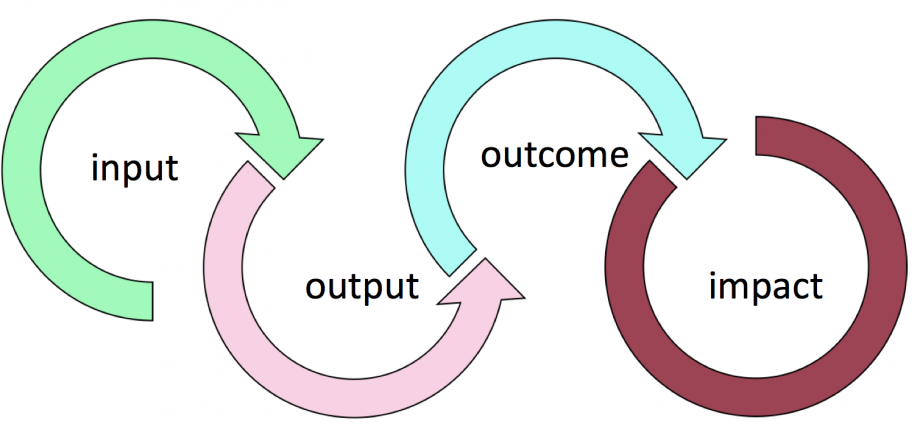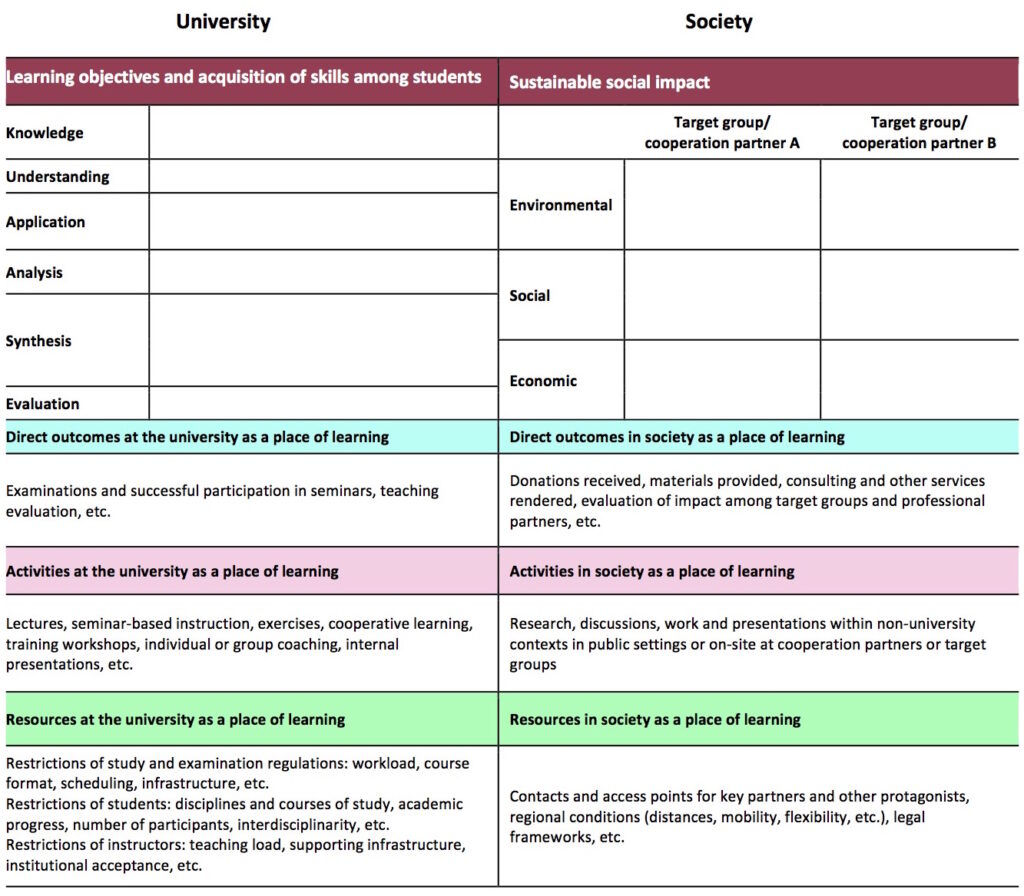This website uses cookies so that we can provide you with the best user experience possible. Cookie information is stored in your browser and performs functions such as recognising you when you return to our website and helping our team to understand which sections of the website you find most interesting and useful.
iooi Service Learning
The iooi Service Learning planning and control tool provides lecturers with valuable guidelines for the structured and systematic planning of activities – from the principal course objectives all the way to the specific use of resources. It contributes towards the professionalisation of complex learning-teaching projects that combine a minimum of two learning locations, the formation of clear expectation ranges among all stakeholders and the facilitation of timely corrective project control.
The four elements of the iooi method

Input: Which framework conditions and resources are required to implement the Service Learning project at the university and in civic society?
Output: Which activities are necessary at the university and in society to achieve the envisaged results?
Outcome: Which concrete results are necessary to achieve the strategic objectives at the university and in society?
Impact: What are the strategic objectives pursued by the course, e.g. with regard to students’ acquisition of skills and impact on society?
The iooi Service Learning method is based on the adaptation of two concepts designed to map out civic involvement and facilitate cooperation with partners outside the familiar environment. The original target group consisted of non-profit organisations and enterprises. The version that has been adapted to the university context centres on the interaction between university and society as the two principal places of learning and takes account of a context that focuses specifically on individual learning and the acquisition of skills.
Among others, the inspiration for the tool has come from the W.K. Kellogg Foundation logic model which supports organisations in their planning, implementation, and evaluation of (non-profit) projects. Aside from detailed step-by-step instructions, the extensive manual also includes a number of checklists. Further information
Closely related to the logic model, but specifically adapted to the needs of enterprises, the iooi method, which was developed under the aegis of the Bertelsmann Foundation, offers valuable guidelines for the design of non-profit projects. Specific attention was paid to the implementation of effectiveness assessment and evaluation criteria. Further information (in German)
Overview of individual factors

By Prof. Dr. Jantje Halberstadt, Leuphana University of Lüneburg, and Prof. Dr. Christoph Schank, University of St. Gallen